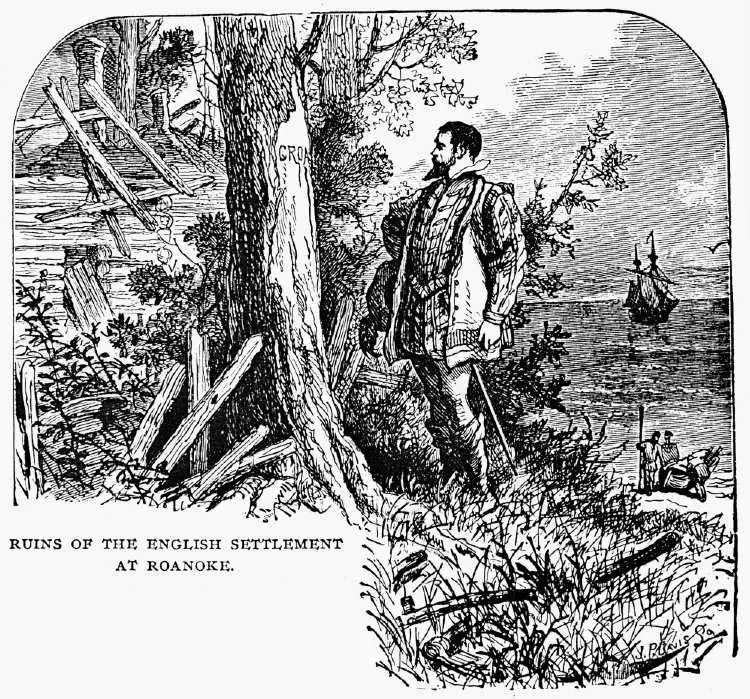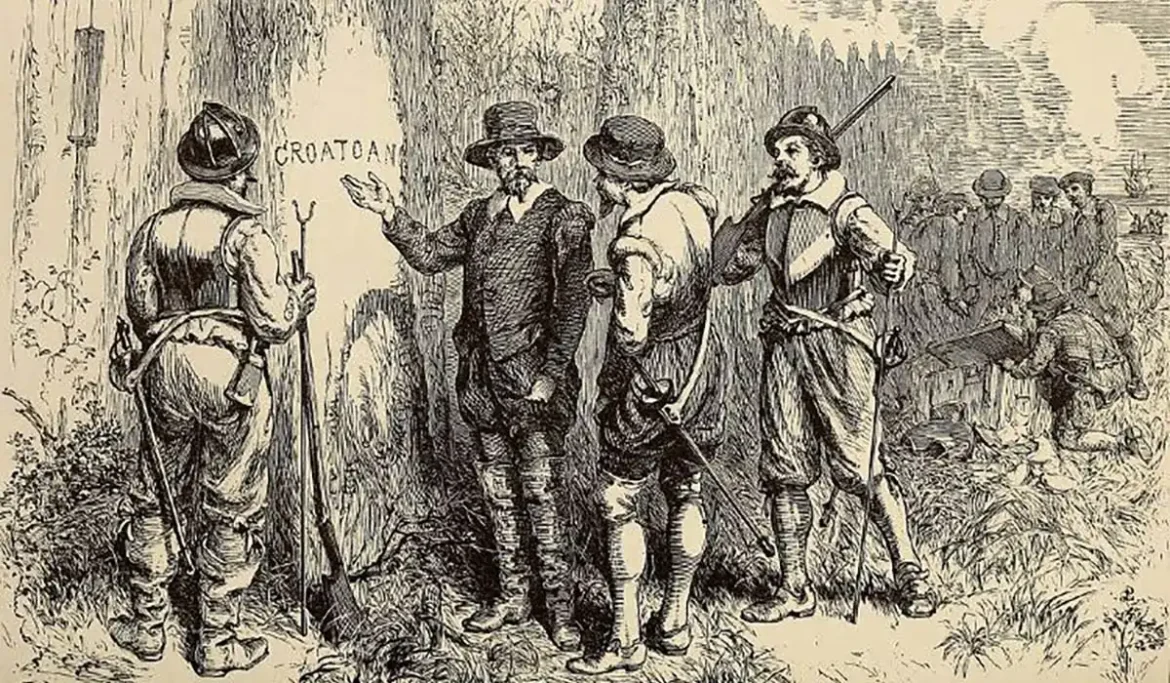Table of Contents
In August 1587, a group of 115 English settlers arrived at Roanoke Island off the coast of what we now call North Carolina. A mere three years later, they had all disappeared without a trace, save for one word – ‘CROATOAN’ – which was carved into a tree nearby.
Some theories point to the colony being captured and killed by local Native Americans, while others point to them assimilating and never being heard of again.
As one of America’s oldest and most notorious unsolved mysteries, the puzzle of the lost Roanoke colony has dumbfounded sleuths for centuries.
This was the second attempt at settling at Roanoke Island

Baptism of Virginia Dare by William A. Crafts, 1876. Image Credit: Wikimedia Commons
In 1583, the English claimed St. John’s, Newfoundland, as the first English territory in North America. Sir Walter Raleigh then spearheaded an attempt at establishing a permanent colony on Roanoke Island. Owing to a lack of supplies and poor relations with the local Native Americans, the attempt failed and the colony’s settlers left. A small detachment of people was stationed there a few weeks later in order to protect England’s claim to the land.
In 1587 came the second attempt at establishing a colony at Roanoke. Around 115 men, women and children, led by Raleigh’s friend John White, were sent to the island to once again re-establish an English presence there.
White, the governor of Roanoke, quickly recognised that the colony was struggling and left for England to request resources and manpower. He left behind his wife, daughter, infant granddaughter Virginia Dare (who was the first English child to be born in the Americas) and the other settlers.
However, upon arriving in England, a naval war broke out between England and Spain as part of the Anglo-Spanish Wars, and Elizabeth I called upon every available ship to confront the mighty Spanish Armada, which impeded White’s return to the colony.
Three years later, John White returned to find the whole settlement empty, its inhabitants having vanished.
Mysterious tree carvings provided the only clue
White and his crew were dumbfounded. Upon initial examination, they discovered the word ‘CROATOAN’ and the letters ‘CRO’ carved into trees within the colony’s borders, which provided the only clue as to what might have happened to the colony. However, a storm approached which impeded a further search and forced the crew to return to England.
At the time the colony was founded, the Hatteras Indians occupied the island. On the basis of the tree carvings, it is thought that the colonists moved to the nearby Croatoan Island, now called Hatteras Island, perhaps to join the Native Americans as a way of overcoming their lack of resources and knowledge of the land.
Other theories suggest that the colony could have been abducted or killed by Native Americans, killed by Spaniards who had marched up from Florida or lost at sea after attempting to sail back to England.
Later speculation varied wildly
A supposed piece of evidence that points to the claim that the colony joined the Hatteras Indians is the existence of stone carvings discovered in 1937-41. They were said to have been made by Eleanor Dare, mayor John White’s daughter.
Known as the Dare Stones, they contain written stories that tell the fates of the colonists as well as personal anecdotes from Eleanor to her father. Though these are largely believed to be a hoax and forgery, there is some evidence that one of the stones might be authentic.
There was also speculation that the colony had assimilated with nearby Native American communities in writings as early as 1605. Conversely, investigations by the later Jamestown colonists reported that the settlers had been massacred, yet also reported stories of people with European features in Native American villages.

John White finding the ruins of the Roanoke colony in 1590, engraving by John Parker Davis, 1893. Image Credit: Wikimedia Commons
Sir Walter Raleigh was severely criticised, most notably by Francis Bacon, for his apparent indifference towards the lost colony. However, it may have worked in Raleigh’s interest to not draw attention to the colony; if the settlers could not be proven dead, he could legally maintain his claim on Virginia.
Indeed, though the fate of the Roanoke colonists remains a mystery, there is evidence that the lessons learned may have helped the next group of English settlers, who founded a colony 17 years later, a little north of the site at Roanoke.
Investigations are still ongoing
Interest in the matter fell into decline until 1834, when historian and statesman George Bancroft published his account of the events in A History of the United States. His descriptions of the colonists, especially White’s infant granddaughter Virginia Dare, cast them as foundational figures in American culture and subsequently captured the public’s imagination.
Investigations into the disappearance of the colony are still ongoing. Since 1998, the Croatoan Project has researched and provided archaeological evidence to back up the theory that the colony moved to be with, or at least came into contact with, the Hatteras tribe.
The discovery of artefacts within Croatoan villages that only English settlers had owned or made has strengthened this theory.

Virginia Dare Monument at the Fort Raleigh National Historic Site on Roanoke Island, North Carolina. Image Credit: Shutterstock
In 2007, a project began which collects and analyses DNA from local families to determine whether they’re related to the Roanoke settlers, local Native American tribes, or both. Strikingly, the present-day Roanoke-Hatteras tribe in the area identifies as descendants of both the Croatan and the lost colonists by way of the Hatteras, who are descended from the 18th-century Croatan tribe.
Despite eccentric theories, potentially forged evidence and new scientific investigations, only time will tell if the mystery of the lost Roanoke colony will ever be truly solved.

